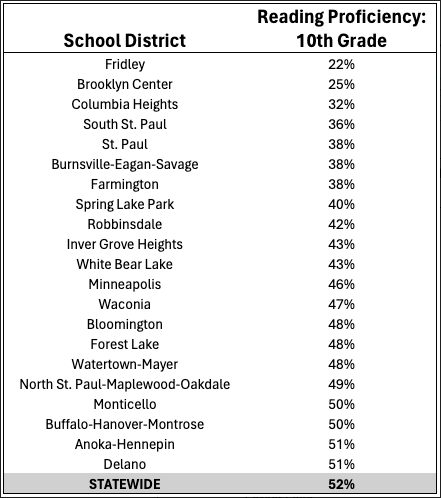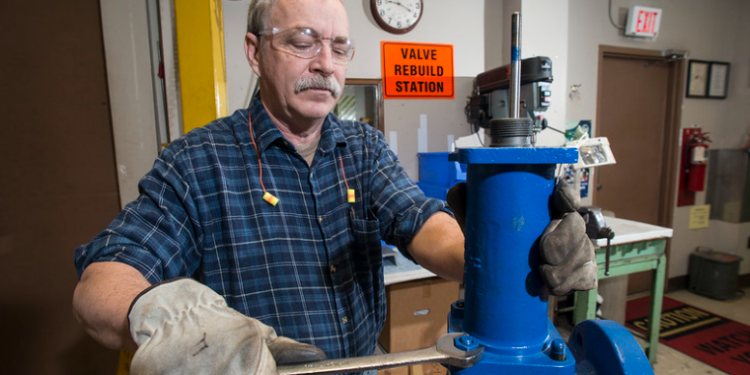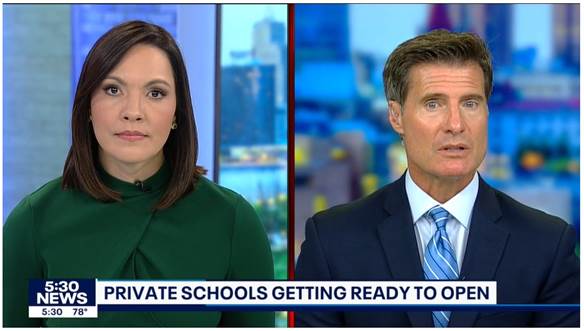In Minnesota, 10th grade is the last time public school students are tested on reading proficiency. The 2023 Minnesota Department of Education assessments revealed that only 52% of all 10th-grade, public-school students in the state are proficient in reading. Many districts have even lower reading proficiency rates. A lot of them are in the Twin Cities metro.
Below are the 21 metro school districts whose average 10th-grade reading proficiency rates are LOWER than the state average. The right column provides the percent of students who are proficient or exceed proficient. Keep in mind that if 25% of students are proficient, then 75% are NOT proficient.

It’s hard to fathom these numbers. We’re not talking about 3rd-grade or 5th-grade students who have time to improve. These proficiency ratings are for sophomores in high school. These numbers represent real students in 21 Twin Cities school districts who are getting driver’s licenses, starting to think seriously about life as an adult, and have only a short time left to be ready for a career, trade, or college. And the majority aren’t ready.
Our public education system is entrusted with the preparation of future generations. But what do we do when it can’t get the job done? That is the reality we are facing.
Some may point to budget shortfalls, arguing that the school districts simply need more money. The reality is that many of these school districts are spending $20,000 to $30,000 per student annually. The problem is not a lack of money, it’s how the money is directed.
There are very real systemic problems in Minnesota’s education system – from the top to the bottom. Minnesotans can work to fix the education system, free it from mandates and bloat that distracts from teaching the basics, but how long will that take?
In the meantime, there are tens of thousands of families in these failing school districts who do not have the resources to move to another school district, homeschool, or send their children to private schools. They are effectively trapped.
Should we tell the families, “Don’t worry, we’ll fix the system!”, while their children fall behind? Or are we willing to consider a relief-valve to give kids in failing public schools a way out?
As a state we require children to be educated and the expectation is that your local school district will provide the education. When the school district fails to uphold those duties, then it is both right and just to give students another way to achieve an education.
For that reason, let alone for the good of the students and the state, the Minnesota Legislature needs to pursue Education Savings Accounts (ESA) for students trapped in a broken education system.
Currently, OAK’s legislation is filed in both the Minnesota Senate and House. If passed, underserved students would be able to apply for an ESA. Once approved based on household income limits, over $7,000 would be deposited into the ESA, which the student can use at any eligible school – public or private – as well as for tutoring services and other education-related expenditures. Those funds come solely from the state’s education budget, leaving local property taxes and other revenue untouched.
Again, the purpose of public education is to ensure that all Minnesotans can receive an education, both for their good and the common good. Even when the system breaks, we still have a duty to provide an education to current and future generations.
The best way of addressing the immediate needs of students trapped in a failing system is to provide them with the freedom and resources to find schools that work for them. Only Education Savings Accounts can do that.
—
Image Credit: Flickr-Savannah River Site, CC BY 2.0













